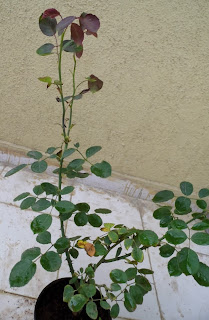Plants of Jatropha genus are native to warmer parts of the world. It ranges from tropical to sub tropical plants. The Jatropha plant can be grown on wasteland or any type of topography. It is drought tolerant and can blossom even on a stony poor soil. It grows from 15-30 feet tall and is bushy. Jatropha is grown commercially to make biodiesel using its seeds as well as to prevent soil from eroding. They make an excellent green cover providing many long term ecological benefits. It is grown as a perennial crop and can yield for 50 years. After 50 years wood can be used as fuel. The pets and children should be kept away from this plant as it is toxic in nature.
Propagation
Jatropha is propagated from seeds or stem cuttings. Growing from seeds will require an adequate spacing, as they are bushy in nature. Generally 10 feet distance is maintained between two Jatropha plants. You can practice 6 * 6 or 8*8 spacing too better results.
While propagating from stem cuttings, take cuttings from existing plant, treat with rooting hormone or honey and plant in container having well drained and aerated soil. Put the container in warm , sunny location. Container should have adequate number of holes to ensure smooth drainage of water out of it.
Soil
Jatropha will grow in any type of soil. It can be sandy or loamy, marginal saline or acidic but it should be well drained and aerated. Soggy soil will lead to root rot in the plant.
Sun /Temperature
Jatropha thrives in bright and sunny location. Ideal temperature is 20-40 degree Celsius. Maximum exposure to sun enhances seed yield. Some Jatropha species can be grown in partial shaded locations too.
Watering
Though Jatropha is drought tolerant , but watering regularly is recommended for healthy growth. Cut down watering in winter.
Fertilizer
Feed plant when plant is actively growing – blooming and fruiting. Although , Jatropha can grow in nutrient lacked soil but feeding will result in better and healthier crop.
Caring
Pinch off the stem tip to promote bushy nature. To grow Jatropha indoor for longer period, trim and prune it regularly to keep its size under control.
Jatropha is vulnerable to aphids and mealy bugs so keep an eye on signs of infestation and treat it.
In many parts of the world Jatrpha is cultivated for meeting country’s energy needs. The oil extracted from Jatropha seeds is being used in making bio diesel which is getting popular as an alternate of non renewable energy resources like petrol and diesel. It also provide secological benefits when grown as green cover. In many areas it is good source of providing employment.







